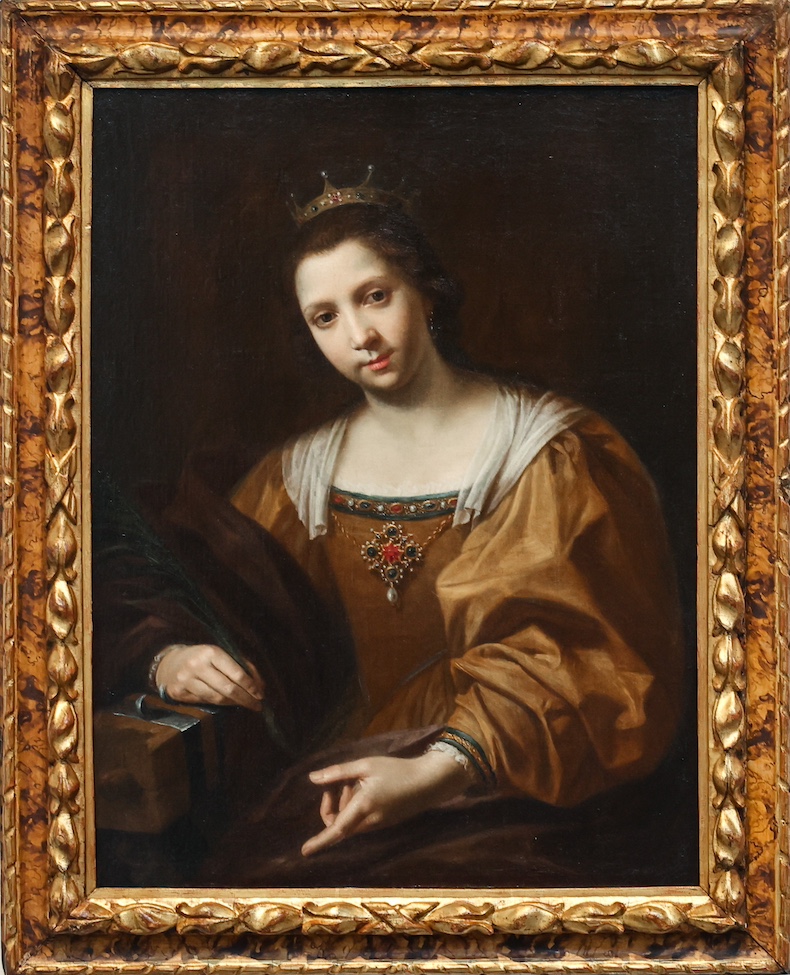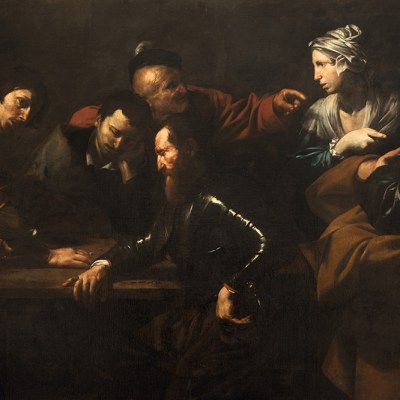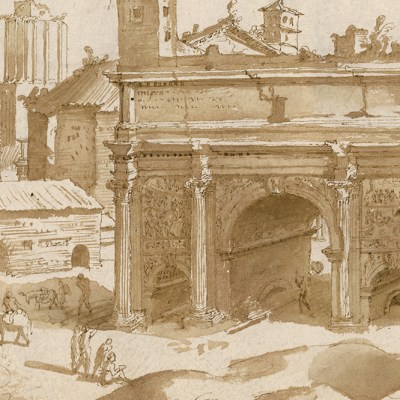
J. Paul Getty Museum, Los Angeles
Christ Carrying the Cross (c. 1565), Luis de Morales
The Getty has announced the acquisition of a painting by Luis de Morales, one of the foremost Spanish painters of the 16th century. His body of work comprises almost exclusively religious scenes, often rendered in minute detail and with a particular focus on the heightened emotions of his figures. This painting is a close-up depiction of Christ carrying the cross, the black background accentuating Christ’s pained expression, the droplets of blood around his forehead and the vivid texture of the wood. At some point in the 18th century, strips of timber were nailed around the perimeter of the work and painted over in order to extend the scene – additions that have been laboriously removed by conservators at the museum. The painting joins a group of works by other Spanish masters including El Greco, Murillo and Goya.
Christ Carrying the Cross (c. 1565), Luis de Morales. J. Paul Getty Museum, Los Angeles
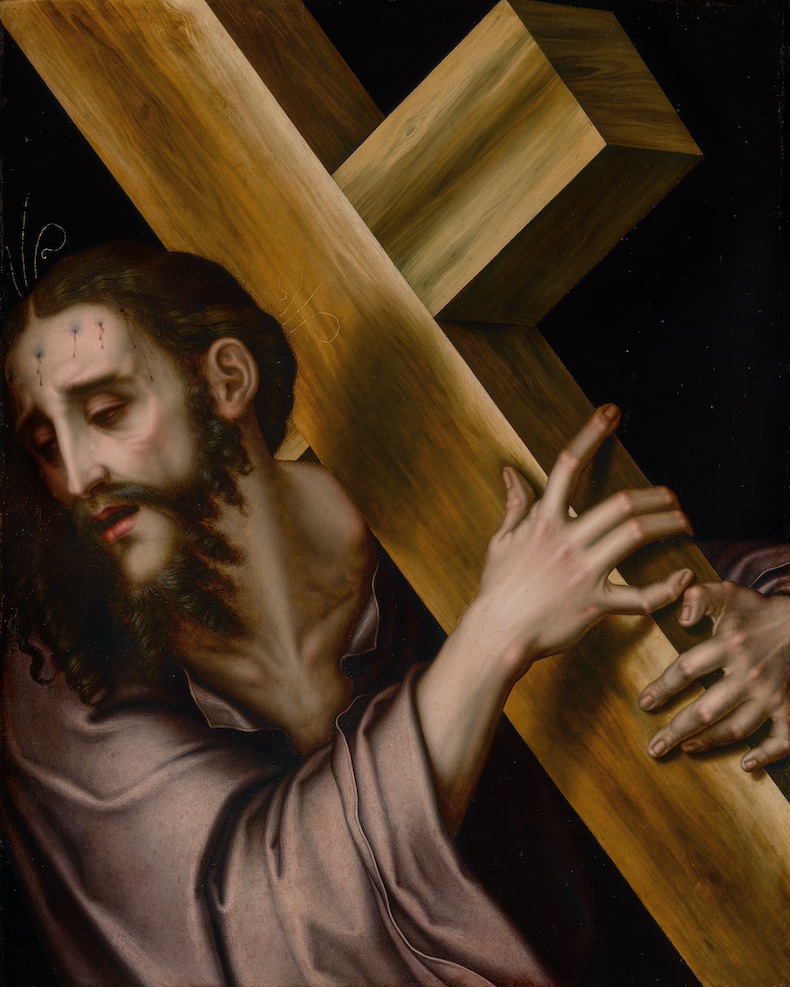
Tate Modern, London
Iva (1973) by Joan Mitchell plus an endowment from the Pérez family
The reputation of the abstract artist Joan Mitchell has surged to such an extent since her death in 1992 that many institutions in the UK, Tate Modern for instance, can these days rarely afford to buy the works that they missed out on acquiring during her lifetime. The Tate has now been given one of her paintings – a six-metre-wide triptych, painted in 1973 and named after the artist’s dog, Iva – by the Miami-based billionaires and art collectors Jorge M. and Darlene Pérez, after what they described as a two-year ‘conversation’ with Maria Balshaw, director of the Tate. Along with their donation, the Pérezes have also pledged to give a series of artworks to the Tate in the next few years by Yinka Shonibare, El Anatsui and others, as well as a multimillion-dollar endowment to help fund curatorial posts dedicated to African and Latin American art. When Iva goes on display, it will hang in the room next to the gallery containing Rothko’s Seagram murals, which the artist donated to Tate in 1969.
Iva (1973), Joan Mitchell. © Estate of Joan Mitchell
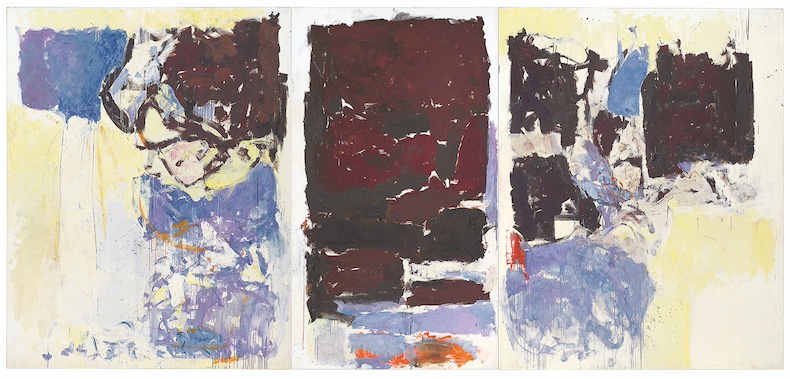
Worcester Art Museum
Entombment (c. 1545; central panel), Maarten van Heemskerck
The Dutch artist Maarten van Heemskerck was born and lived most of his life in Haarlem, but some of the most formative years of his artistic career were spent in Rome in the 1530s. The influence of Roman art and architecture can be seen clearly in the ink drawings he produced of Roman architectural sites, but is also present in many of his devotional paintings, such as his Entombment triptych (c. 1545), the central panel of which was only recently rediscovered and has now been purchased by Worcester Art Museum in Massachusetts from the dealers Caretto & Occhinegro at TEFAF Maastricht. The panel shows the stricken Christ in the cave, flanked by sorrowful attendants, with Calvary and the three crosses in the background – two of which are still occupied by the crucified thieves. Worcester already has the two donor panels of this triptych on long-term loan from the Selldorff family (whose collection was looted by the Nazis and only returned to them in 2011); this acquisition marks a happy reunion. The whole triptych will go on display at the museum in the summer.
The Entombment (c. 1545), Maarten van Heemskerck. Worcester Art Museum. Photo: Caretto & Occhinegro
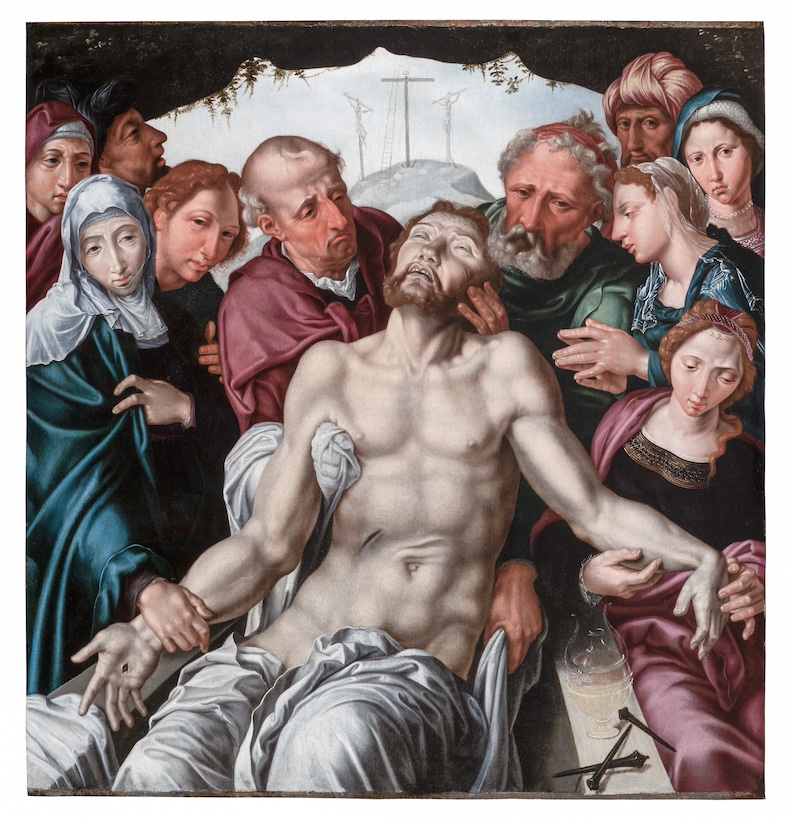
Louvre Abu Dhabi
Confirmation (c. 1637–40), Nicolas Poussin
When the 11th Duke of Rutland put Nicolas Poussin’s painting Confirmation (c. 1637–40) up for sale in 2022, it was regarded as so significant that the UK government placed a year-long export bar on the painting, which it valued at £19m. The deadline rolled around and no UK buyer was found, which opened the door for the Louvre Abu Dhabi – which already has a self-portrait by Poussin on loan from the Louvre in Paris – to acquire it. The museum has now confirmed the acquisition and put both Poussin paintings on display alongside one another. The work is one of Poussin’s Seven Sacraments, a series that entered the collection of the Duke of Rutland in the 1780s; four of the works were on loan from 2002–10 at the National Gallery in London, which acquired one of the seven, Eucharist, last year. The series is now scattered throughout public and private collections around the world.
Confirmation (c. 1637–40), Nicolas Poussin. Photo: Daryll Borja – Seeing Things; © Department of Culture and Tourism – Abu Dhabi
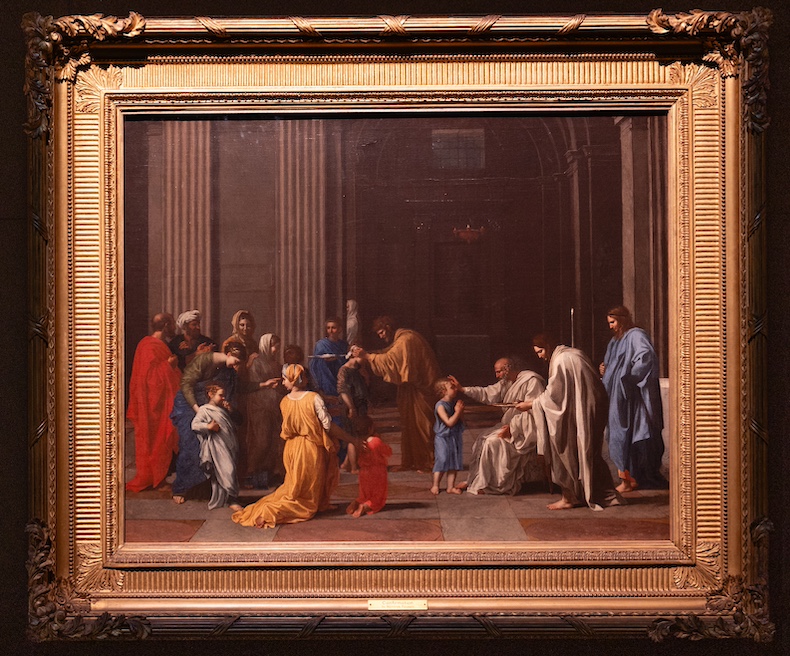
Nationalmuseum, Stockholm
Trouville, the beach and the villas (1882), Gustave Caillebotte
The Nationalmuseum has become the first public institution in Scandinavia to own a work by the French painter Gustave Caillebotte. Best known for his Parisian street scenes and his paintings of labourers, Caillebotte spent summers in Normandy from 1880 onwards and this work, a serene view of the beachfront, was painted in Trouville-sur-Mer on one of the artist’s sojourns. Although the subject matter is different from much of his other work, the painting’s unusually high perspective does reprise a favoured technique of Caillebotte, as seen in, for example, his Boulevard seen from above (1880). He painted it ‘wet on wet’ – in other words, applying new layers of paint before the layer beneath had dried – and the result is an impressionistic, almost translucent quality.
Trouville, the beach and the villas (1882), Gustave Caillebotte. National Museum of Sweden. Photo: Connaught Brown

Los Angeles County Museum of Art
Works including a portrait by Virginia Vezzi
The Los Angeles County Museum of Art (LACMA) recently held its annual collectors committee fundraiser, part of which involved the announcement of the museum’s most recent acquisitions – a diverse group that includes six works by three 20th-century Japanese-American artists, Chiura Obata, Tokio Ueyama and Miné Okubo; the collection of 101 Indonesian textiles dating from the 15th to the 20th centuries owned by former LACMA curator Mary Hunt Kahlenberg; a self-portrait sculpture by Max Beckmann made in 1936; and a recently rediscovered painting by the 17th-century Italian artist Virginia Vezzi. Works by Vezzi are relatively rare and the acquisition of this painting – a self-portrait as Saint Catherine of Alexandria (c. 1624–26) – marks another milestone in the rise of her reputation. Vezzi spent much of her life in Paris and married the French artist Simon Vouet; LACMA will become the only museum in the world to display a portrait by Vezzi next to one of her husband’s.
Self-Portrait as Saint Catherine of Alexandria (c. 1624–26), Virginia Vezzi. Photo: Stefanie Keenan; © Museum Associates/LACMA
